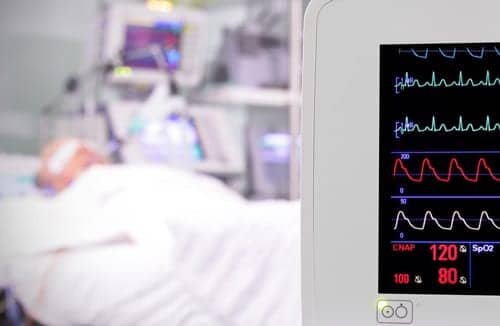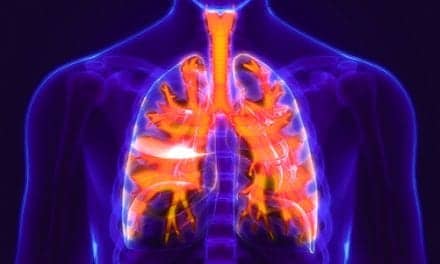For decades, high-frequency percussive ventilation (HFPV) has found favor with some medical facilities as a viable alternative to conventional ventilation methods.
By Phyllis Hanlon
A 15-year retrospective analysis of International Classification of Diseases, Ninth Revision (ICD-9) indicated that the mortality rate for patients with acute respiratory distress syndrome (ARDS) has decreased by 31%. Increasing use of low tidal volume ventilation and other lung protective strategies could account for the decrease. However, in spite of the lower incidence of mortality, patients who present with ARDS are still at increased risk for a number of adverse effects, one of which is hypoxemia.
Conventional mechanical ventilation approaches may not evoke positive outcomes and, in fact, may cause or exacerbate lung injury. For this reason, high-frequency percussive ventilation (HFPV) has found favor with some medical facilities as a viable alternative to conventional approaches.
HFPV dates back to 1980 when Forrest M. Bird, MD, used this treatment for patients who had suffered burns and/or smoke inhalation with resulting acute respiratory failure. He coined the term “volumetric diffusive respiration” (VDR), which pertains to the ability to percuss the lungs and create “intrapulmonary percussive mixing” with secondary diffusion. VDR increases diffusive oxygen transport into the alveoli and convective carbon dioxide (CO2) washout from the peripheral airways.
In 2003, researchers in Trieste, Italy outlined the basic principles behind HFPV,1 a specific mode of high frequency ventilation (HFV). Based on experience, they suggested that HFPV, in combination with conventional mechanical ventilation, could benefit patients with severe respiratory failure. They defined HFPV as “flow-regulated time-cycled ventilation that creates controlled pressure and delivers a series of high frequency subtidal volumes in combination with low frequency breathing cycles.” The authors pointed out that Bird’s VDR is the only system that delivers HFPV.
Nine years later, the same Italian researchers reported findings of a study2 that investigated the application of HFPV in patients with acute lung injury/acute respiratory distress syndrome (ALI/ARDS). Thirty-five patients, unresponsive to conventional ventilation after 12 hours, were given HFPV for 12 hours, keeping mean airway pressure consistent. Gas exchange was measured at 12 hours after admission, every four hours during HFPV, one hour at the end of HFPV and 12 hours after HFPV ended. Thirty-five patients on conventional ventilators served as the control.
PaO2/FiO2 and the arterial/alveolar oxygen ratio increased during HFPV; a PaO2/FiO2 steady state was recorded during the last 12 hours of conventional ventilation. Neither one of these measures changed in the control group. During the first four hours of HFPV, PaCO2 decreased, but remained unaltered thereafter. The study authors concluded that gas exchange improved, and remained unchanged 12 hours after ending HFPV, in patients who were unresponsive to conventional ventilation.
Moreover, these findings concur with those reported in an article3 published by the American Association of Critical Care Nurses, which stated, “unique gas flow mobilizes significant volumes of pulmonary secretions, further facilitating gas exchange.”
Most recently, University Hospital in Brussels, Belgium issued a retrospective analysis4 of critically ill patients with moderate and severe ARDS who were given HFPV. This data analysis evaluated 42 patients, 20 with pneumonia-related ARDS and 22 non-septic ARDS cases, and revealed that within 24 hours HFPV restored normal pH and PaCO2. Non-septic patients experienced better oxygenation than patients with pneumonia-related ARDS; the latter group also remained on HFPV longer (7.0 vs. 4.9 days; P < 0.05) and also had a higher mortality rate at 30 days than the non-sepsis-related ARDS cases (50% vs. 18%; P = 0.01).
This analysis found that HFPV in moderate and severe ARDS patients resulted in rapid and sustained improvement in oxygenation and ventilation. However, more study is necessary to determine the underlying causes of lower oxygenation improvements and longer ventilator dependency in pneumonia-related ARDS cases versus non-sepsis ARDS patients. RT
_________________________________________________________________
Phyllis Hanlon is a contributing writer to RT. For further information, contact [email protected].
_________________________________________________________________
References
- Lucangelo U, Fontanesi L, Antonaglia V et al. “High frequency percussive ventilation (HFPV): Principles and technique.” Minerva Anestesiol 2003;69:841-51.
- Lucangelo U, Zin WA, Fontanesi L et al. “Early short-term application of high-frequency percussive ventilation improves gas exchange in hypoxemic patients.” Respiration. 2012;84(5):369-76. doi: 10.1159/000334403. Epub 2011 Dec 28.
- Kunugiyama SK, Schulman CS. “High-frequency percussive ventilation using the VDR-4 ventilator: an effective strategy for patients with refractory hypoxemia.” AACN Adv Crit Care. 2012 Oct-Dec;23(4):370-80. doi. 10.1097/NCI.0b013e31826e9031.
- Spapen H, Borremans M, Diltoer M et al. “High-frequency percussive ventilation in severe acute respiratory distress syndrome: A single center experience.” J Anaesthesiol Clin Pharmacol. 2014 Jan-Mar; 30(1): 65-70.










